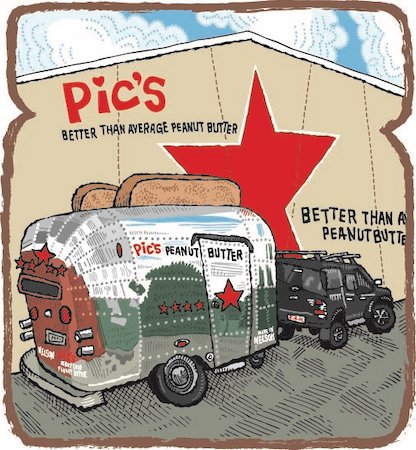The first English written reference to toast appears in 14th century cookbooks. Back then, after grilling your bread over the fire, you didn’t slather on butter or jam. Instead, toast was served soaked in ale or hot wine and spices. (They called this dish sops, which turned into our words soup and supper—a light evening meal of sops.) The tradition of consuming toasted bread in wine or ale persisted until the 17th century or so, when it became popular to drink to someone’s health. We know this as making a toast.
Over the years, sops moved from being supper food to breakfast food. In the 18th century, the Scottish breakfast of champions transitioned from being a dram of whisky and toast in ale to tea and toast with marmalade. Let that sink in for a moment. In other words, the standard breakfast went from being ingredients all produced locally—bread, ale, whisky—to ingredients produced globally: tea grown in Asia, marmalade made with Mediterranean citrus. It makes me wonder if 18th century Scottish breakfasters marveled at how cosmopolitan they had become. Was there a backlash? A “Buy Local” movement?
Toast becomes a global phenomenon.
Exotic new toast pairings weren’t just coming to Britain. Late 18th century English colonists brought toast around the world, too. Two and a half centuries later, that trend has stuck.
Here in the US, we’re used to seeing a coffee pot in our hotel rooms. In Australia—where British colonization began in 1788—every hotel room I’ve stayed in has had a toaster. I love it! Aussie tourists love their toast so much, even on vacation, they pack bread.
Today, toast is having something of a heyday.
No longer just a quick weekday breakfast at home, cafes across the US are opening toast bars. From Aussie-inspired cafes in New York City like Bluestone Lane, to The Mill in San Francisco, to our own Zingerman’s Coffee Company here in Ann Arbor, toast bars offer menus featuring different toasted breads with various toppers, from Australian vegemite to Bulgarian lutenitsa to ricotta and seasonal fruit compotes to the reigning champion of cafe toast, avocado.
A few years back, Pic Picot, maker of Pic’s Peanut Butter in New Zealand, toured across his country to share his peanut butter. He made the journey in his toast-mobile: an airstream trailer designed to look like a toaster, complete with giant slices of bread popping out of the top. Apparently, in New Zealand, just having a toaster available when you arrive at the hotel isn’t enough. With Pic leading the charge, the kiwis have pioneered Travel By Toaster.

